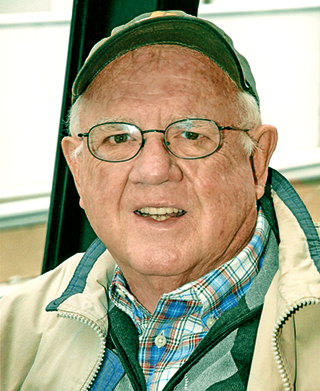.png)
When it comes to carbon sequestration payments, the major frustration we hear from many no-tillers is that they don’t believe they’ll be accepted due to the “additionality” requirements of some programs. In fact, it’s exasperating to hear no-tillers say they’ll be shut out from these programs when they see less environmentally conscious farmers profit by moving to the same reduced tillage and cover crop practices they’ve been using for decades.
‘Additionality’ Concerns
The “additionality” belief, a major stumbling block, may be a myth in some instances. Even if you are already doing one or more of the qualified practices, chances are good that you’ll still be able to participate. Some programs say you must do something new on some acres, while others award dollars for past practices.
Yet the disbelief shown in an email from an Iowa no-tiller is typical:
“I’ve considered applying for a few carbon programs and still remain skeptical, even though I know my farming practices help improve carbon cycling. And I have no-tilled long enough now that I wouldn’t qualify for many of the programs.”
He’s already reducing his farm’s overall carbon footprint by implementing regenerative practices that include fewer trips across the field; less fuel to plant, fertilize and harvest; and less reliance on buying synthetic inputs.
But what’s interesting from the email is that he likely could qualify for a carbon program with a diversified 4-crop rotation that includes corn, soybeans, small grains and food-grade crops that help him reduce input needs, build soil health and diversify farm income.
In reality, most No-Till Farmer readers still have numerous options to qualify. These could include adding no-till, strip-till or cover crops on more acres — or on newly purchased or rented land. Moving away from using minimum tillage to strip-till or no-till for corn, along with no-tilling soybeans, could likely qualify some growers.
Besides no-till, strip-till or cover crops, other qualifying practices among a dozen carbon sequestration programs include other types of reduced tillage, nitrogen management, fertility reduction programs, rotational grazing, increasing biodiversity and even the use of soil probiotics. One caution: Not all these options qualify for every carbon sequestration program.
Find Something to Add
A recent Successful Farming article offered details on 11 popular carbon sequestration programs. The article also featured a profile of a grower enrolled in each program. Among the 11 profiled farmers, most no-tilled and seeded cover crops on much of their ground long before enrolling in the carbon programs.
Several programs required a 3-4 year look back at qualified practices such as no-till and cover crops on which they would make carbon sequestration payments.
It was great to see the words of Casey Mattke, the U.S. digital and systems leader at Corteva Agriscience. He maintains it is rare to find a grower who can’t add something to qualify.
“The answer is to add a practice,” he says. “So if you’ve been no-till, add cover crops. If you’ve been reduced till, can you reduce tillage even more? Potential payments will be correlated to the significance of the practice change.”
Ideas to Qualify
While a high percentage of our No-Till Farmer audience uses cover crops, many aren’t doing so on all of their ground. Data from our latest No-Till Operational Benchmark Study indicates 77% of no-tillers are seeding an average of 509 acres of cover crops.
Since they’re only seeding cover crops on 37% of their row-crop acreage, there’s plenty of room for growth. Grazing a neighbor’s cattle or sheep on your cover-cropped acres could also qualify.
So don’t think you’ll automatically be disqualified from carbon sequestration programs just because you’ve been no-tilling, strip-tilling or seeding cover crops for years. Instead, check the various programs for other ways to qualify. You may be surprised at what you learn.
And even if you ultimately decide not to participate, remember this: You’re still storing more carbon in your soils with no-till and cover crops than many other growers who will be getting paid to try ideas you’ve been using successfully for years and years. And you didn’t need someone else’s carbon bucks to farm your family’s ground in the most profitable and most responsible way.






